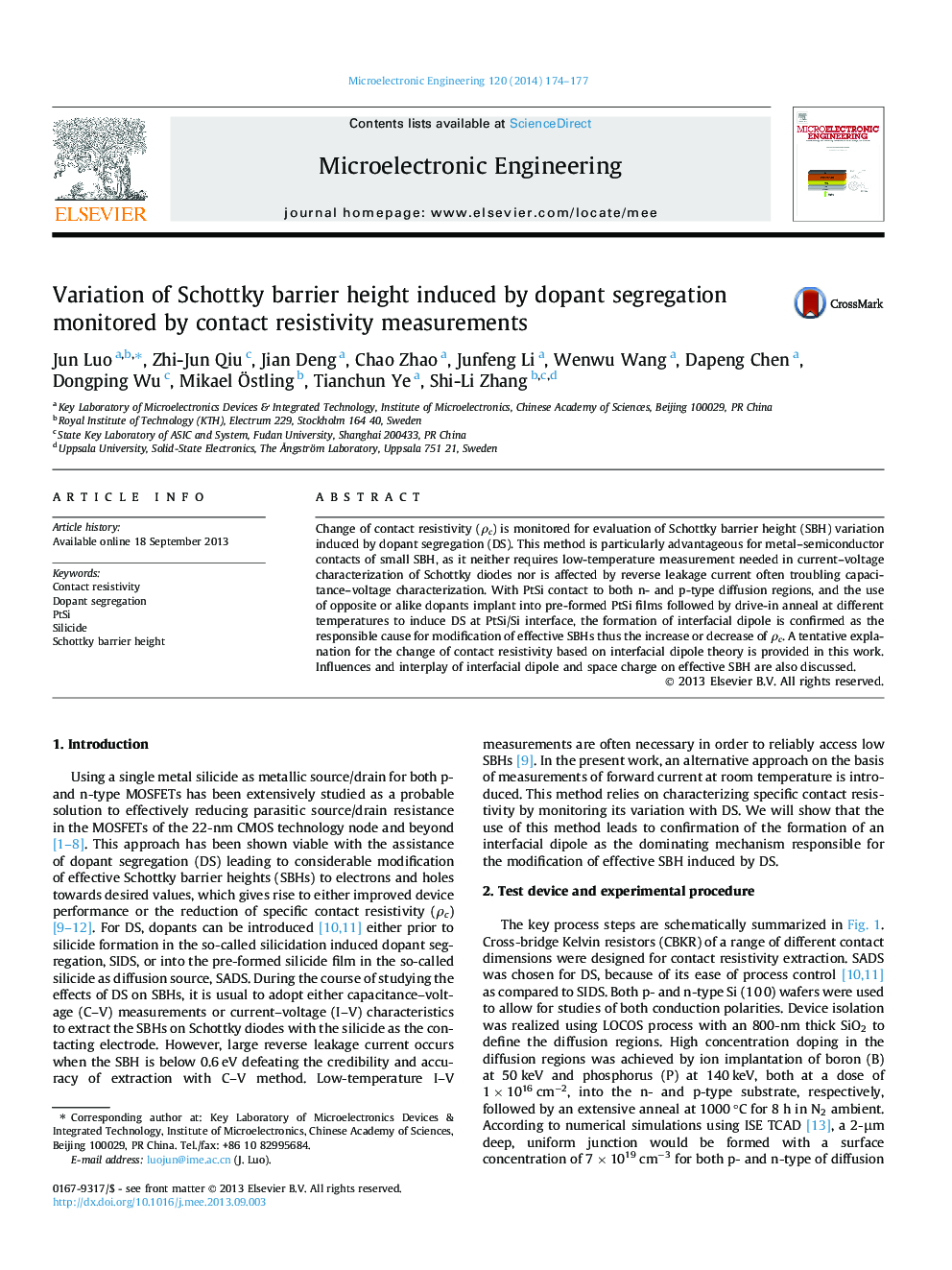| Article ID | Journal | Published Year | Pages | File Type |
|---|---|---|---|---|
| 541327 | Microelectronic Engineering | 2014 | 4 Pages |
•The change of contact resistivity is monitored for evaluation of Schottky barrier height induced by dopant segregation (DS).•The use of DS in opposite or alike polarity on diffusion regions leads to increased or decreased contact resistivity.•A tentative explanation for the change of contact resistivity based on interfacial dipole theory is provided.
Change of contact resistivity (ρc) is monitored for evaluation of Schottky barrier height (SBH) variation induced by dopant segregation (DS). This method is particularly advantageous for metal–semiconductor contacts of small SBH, as it neither requires low-temperature measurement needed in current–voltage characterization of Schottky diodes nor is affected by reverse leakage current often troubling capacitance–voltage characterization. With PtSi contact to both n- and p-type diffusion regions, and the use of opposite or alike dopants implant into pre-formed PtSi films followed by drive-in anneal at different temperatures to induce DS at PtSi/Si interface, the formation of interfacial dipole is confirmed as the responsible cause for modification of effective SBHs thus the increase or decrease of ρc. A tentative explanation for the change of contact resistivity based on interfacial dipole theory is provided in this work. Influences and interplay of interfacial dipole and space charge on effective SBH are also discussed.
Graphical abstractFigure optionsDownload full-size imageDownload as PowerPoint slide
